Why Are These Plastic Surgeries Becoming So Popular Among Chinese Women?
In China, the number of plastic and cosmetic surgery procedures is soaring.
Growing by a staggering 7.9% every year, the plastic surgery revolution in China represents more than just a market shift. According to the South China Morning Post, plastic surgery is becoming “one of the biggest expenses for Chinese households.”
In the U.S., we’re seeing a similar boom among the Chinese demographic. More and more U.S. residents with pronounced asian features are seeking surgical help.
In this article, we’ve set out to look into the phenomenon, and get to the bottom of why Chinese residents are looking at the surgeon’s knife as a solution to their problems. We also highlight which procedures exactly are popular among our Chinese patients, and why.
For Chinese Women, Cosmetic Surgery Is More Than Just a Personal Choice
Once you start scratching beyond the surface, you realize that the boom in the Chinese plastic surgery market ultimately comes down to one word: workplace competition.
For Americans, the motivation to go under the knife is mostly intrinsic. Tummy tuck, for example, is one of the most popular plastic surgery procedures requested by American women. The surgery is often a part of the larger Mommy Makeover series, aimed to restore youthful appearance in new mothers.
Followed by liposuction and breast procedures, it is common for American women to request procedures that are more visible in the bathroom mirror rather than in the office. Most popular procedures in the U.S. are about personal, intimate change, not a display for others.
For the Chinese demographic, however, the story is entirely different.
Both in China and across the world, Chinese women—mostly young women—are going under the knife in hopes that a better appearance will increase their chances at exciting career opportunities.
“If I can get prettier, why not try?” says a young female in a short South China Morning Post documentary. “There was a [job] interview where another woman was better in English than me. But HR told me that the chairman likes women with oval faces, so I got the job. […] I’ve spent 600,000 yuan (US $90,000) just on my body.”
While the woman acknowledges that some part of the decision was indeed personal—a way to come to terms with an old wound—for the most part, it was cold and calculated.
“It’s an investment, absolutely,” she explains. “Because the money may depreciate, but your looks will always be there. […] My face is worth around $30,000.”
Ultimately, however, even the most calculated decisions come down to personal fulfilment.
“The return on investment is my happiness.” the female adds. “My face gives me confidence, motivating me to try harder.”
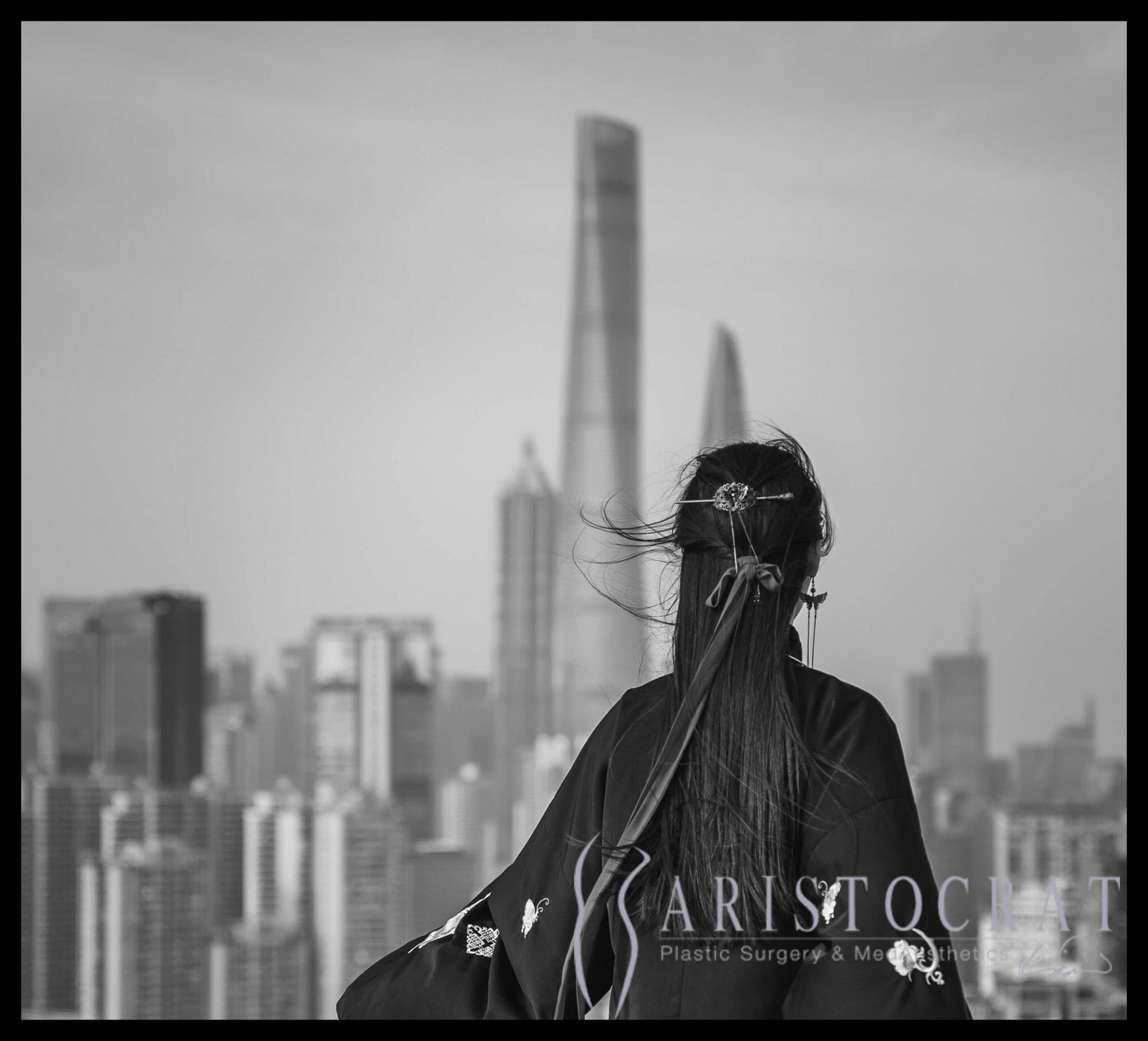
If all of this sounds a bit cruel and over-the-top, it’s because it is. But in a world where appearances matter more than anything, who are we to judge?
In China, the emphasis on women’s appearance in terms of her career opportunities is put on public display. For example, it is not uncommon for Chinese employers to conduct their recruiting processes in the format more characteristic to fashion shows rather than job interviews.
It is also common for job postings to specify particular physical attributes in China—such as height, weight, and certain facial features—even for jobs that do not necessarily revolve around the person’s appearance.
For that reason, the vast majority of plastic and cosmetic surgery procedures—around 6.5 out of 8 million overall annual surgeries—are requested by women under 30.
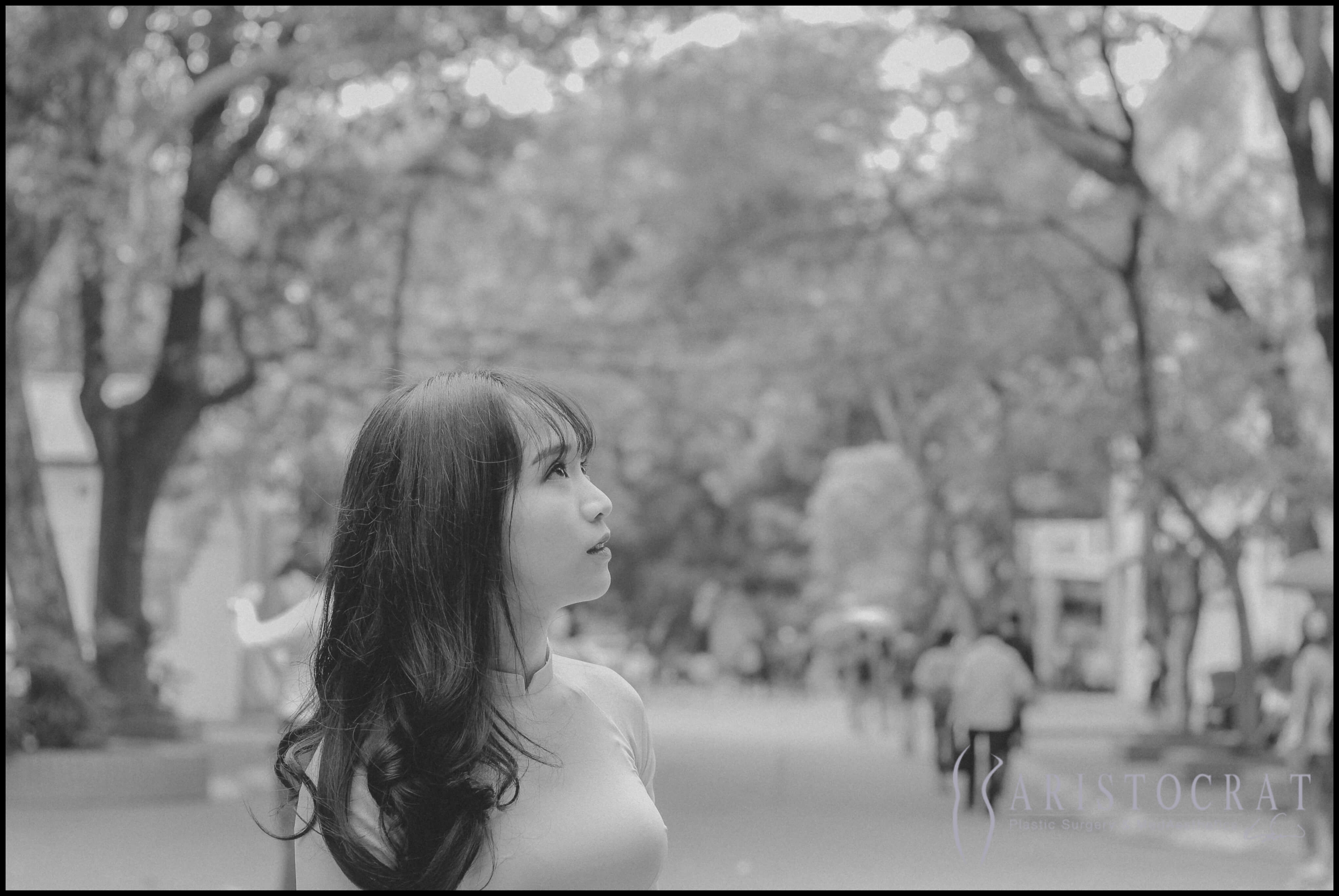
In the U.S., the question is more of a taboo. That, however, does not mean that women are not judged by their appearance in the Western world.
According to a CNN article, “Attractive people earn about 5 percent more in hourly pay than their average-looking colleagues, who in turn earn 9 percent more per hour than the plainest-looking workers.”
In actual salaries, here’s what the separation looks like: “if an average-looking person earned $40,000, their prettiest co-workers would make $42,000 while their least attractive colleagues brought home just $36,400.”
However, this is just the tip of the iceberg.
While overall appearance can be justified as a factor, it is no secret that having Asian features automatically kicks you into a different version of the American dream.
According to the national EEOC workforce data, Asian American white-collar professionals are the least likely group to be promoted from individual contributor roles to management. Even more so than blacks and Hispanics.
While being one of the most highly educated and highest-income demographic groups in the United States, Asian Americans are least likely to get promoted to management positions. This dichotomy only leads to one conclusion: looks do matter.
The picture remains consistent across a number of big-ticket verticals. Goldman Sachs, for example, reported that 27% of its U.S. professional workforce was Asian American, but only 11% of its U.S. executives and senior managers, and none of its executive officers, were.
Cruel? Yes. Unfair? You bet. Legal? Totally.
But that’s the reality we live in, and that’s the reality that young men and women will need to adjust to in order to thrive in today’s workplace. All we can do is to make sure these adjustments happen in a safe and controlled way.
A Cultural Phenomenon, Too
Whilst workplace competition is at the very core of the recent explosion of plastic surgery procedures among the Chinese demographic, it’s a cultural change that set the scene.
One of the major influences that have sprouted this shift is the global surge of the Korean Pop music.
More commonly known as K-pop, the industry has made the leap from niche, West-inspired mimic to a major phenomenon with demand worldwide—all of that in less than a decade. It has given birth to artists like BTS and CL, who are more than well-known in the U.S., not to mention Asia.
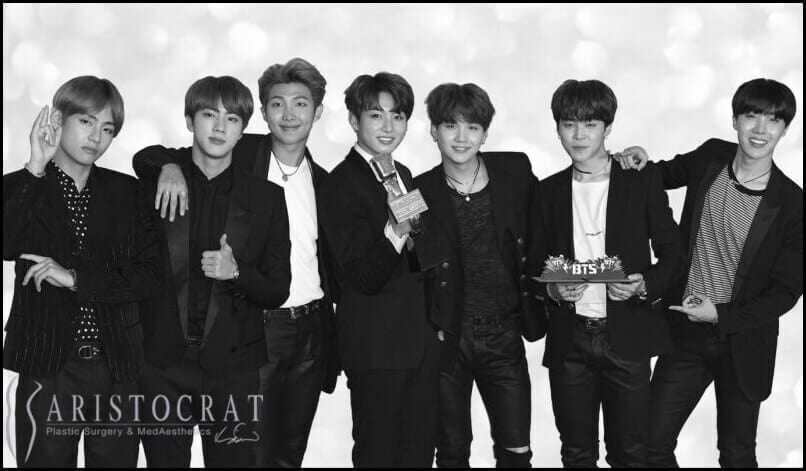
For one, K-pop has set the standards of what Asian beauty is supposed to look like. In many cases, unsurprisingly, it is a Westernized version of Asian ideals.
But the other thing is how open Korean superstars are about their plastic and cosmetic surgeries. Unlike Western celebrities—who do not like to talk about their surgical adjustments—South Korean performers talk about cosmetic surgery openly. Whereas in the U.S. cosmetic adjustments are seen as a form of “cutting corners”, in Asia, it is viewed as an act of courage.
This portrays surgical procedures in an entirely different color. No longer plastic surgery is something that you need to have in order to compete—that fact is widely acknowledged across the world—but it is okay to have one, too. It is no longer a taboo.
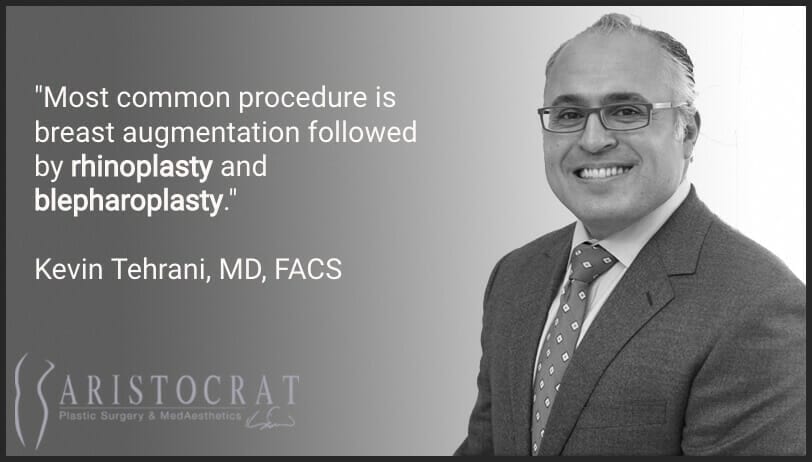
The other thing is the westernization of the Chinese culture on the inside. Ever since China lowered borders and let capitalism in, it has experienced immense growth. Its people—most of whom now form a healthy middle class—are hungry for more. “The beauty craze” is how Chinese sociologists describe one of the most pronounced effects of the country’s economic growth.
What is beauty, though?
During imperial times, natural beauty was praised. Curves were considered beautiful. A white face, no eyebrows, small mouth, and—God forbid—no make-up.
Today, other things are considered beautiful. Big eyes, small mouth, high nasal bridge, pointy chin and, of course, being skinny. Remind you of anything?
Are They Going for Western Beauty Standards?
At first sight, it might appear as if all Chinese women want to look… less Chinese.
“I want to look even more Western.” says Xiao Qi, a Chinese supermodel, 19. “My job demands this. Especially when you’re a model, when you’re standing in front of cameras, your face must have a strong profile.”
In a documentary by Journeyman Pictures, four young Chinese women were asked about what they consider their beauty ideals.
“Her face shape is very three-dimensional.” one of the women says. “Especially her cheekbones and pointy chin.”
“The European face is three-dimensional.” another one adds. “The eyes have got a good shape, a high nasal bridge. European women also have full lips. Us, Chinese, on the other hand, have very flat faces. It doesn’t look good on pictures. That’s why many Chinese women would prefer to look more European.”
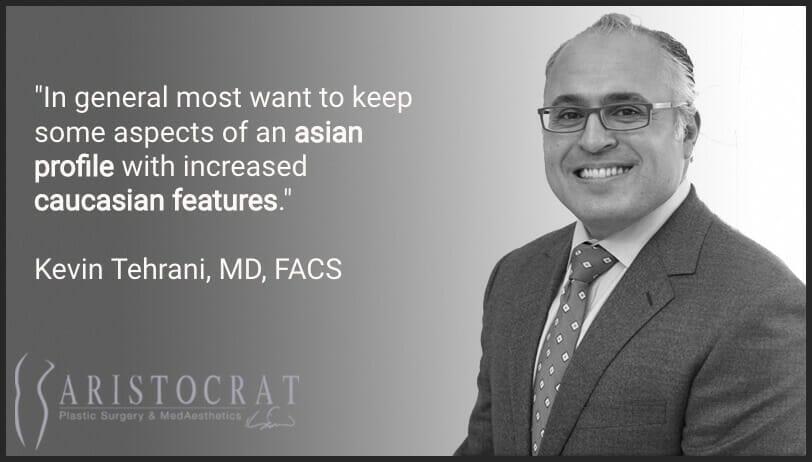
That being said, it is not necessarily the Western look Chinese women are after, but rather a Westernized look.
The cultural shift, ignited by K-pop and rising acceptance of the surgeon’s knife, gave birth to a new brand of beautiful—the Chino-American look, accepted worldwide.
In the end, us, Americans, seem to like certain Asian features—they seem exotic and smart—as long as they’re properly Westernized.
From Big Eyes to “Three Dimensional Faces”
The procedures Chinese women are usually after are—big surprise—focused on the facial area. Namely, here are the five surgical procedures requested by Chinese women the most:
1. Eyelid Surgery
“Can you see as much as a white person can?”
These types of discriminating, aggressive comments often haunt Asian-Americans for the entirety of their lives.
People of Asian descent are often—more than 50% of the time—born with so-called “monolids”, a “condition” when your upper eyelids have no visible crease.
In Westerners, we’re used to the eyes being “wide open” and pronounced. For many Chinese men and women, however, that is not the case.
This creates the feeling that the person is somewhat less aware and even sleepy. For the hyper-competitive environment we live in, those are not the sexiest of features, even if there’s not a grain of logical backing to them.
For that reason, double eyelid surgery—a popular term for East Asian blepharoplasty—has emerged as the number-one shaping tool in helping Chinese women fit into the Western workplace.
In 2017 alone, approximately 1.3 million people worldwide have undergone the procedure. In Asia, it is the most commonly requested procedure.
The result? Bigger, more aware looking eyes. Westernized.
How Does the Double Eyelid Procedure Go?
There are two ways to go about the double eyelid procedure.
The first option is when a doctor simply tightens your eyelids with stitches, creating an artificial crease, causing your eyes to look bigger. It’s a mild procedure with virtually no recovery time. As such, it offers moderate results.
If you’re truly serious about your looks, you’ll want the other option: the double eyelid surgery.
Basically, during the procedure, you’ll be put under general anaesthesia—which means you’ll be asleep throughout the procedure. While dreaming, a surgeon will make an incision, and remove some of the muscle, fat and skin in your upper eyelids. It is a quick and safe procedure, which often lasts less than 30 minutes.
What Is the Recovery Like?
Compared to other invasive surgical procedures, recovery from blepharoplasty is merely a walk in the park.
After the procedure, you’ll be bandaged up and ready for someone to take you home.
Once you’re there, expect bruising and swelling the next day. The day after the procedure is usually the worst in terms of bruising and swelling.
During the first 48 hours, it’s best to apply ice or cool compresses to your eyes. They will help you reduce the swelling and heal quicker.
Somewhere in the next 3-4 days, you’ll be called to the surgeon’s office to remove the bandages and examine whether you’re healing properly. Stitches are usually removed after 7 days after the procedure.
While some patients may feel like they’re ready to get back to work after 10 days, we recommend keeping your calendar clear for at least 2 weeks after the surgery. That’s when bruising and swelling will be nearly over.
Is Plastic Surgery Procedure Safe?
Despite the spooky image—with the surgeon’s knife being so close to the eyes and all that—double eyelid surgery is one of the safest invasive procedures out there. It is quick on the surgeon’s table and it is quick to recover from.
It is safe mostly due to the fact that very little incisions are made. Complications arise mostly with big, largely invasive procedures.
Naturally, a lot will depend on the qualifications of your surgeon. Always make sure you’re going with a Board-certified surgeon you’re fully confident.
Does Eyelid Surgery Leave Scars?
Now, it wouldn’t be much of a procedure if it left scars on the most visible part of the human body, would it?
Luckily for all of our Asian-American patients, eyelid skin does not develop a hypertrophic response—as in, a scar-inducing response—in most cases.
There are, however, instances where stitches are left for more than 5-7 days, which could leave to a permanent deformation of the skin. That’s why going to the best surgeons is an absolute must.
Is Double Eyelid Surgery Permanent?
We tend to avoid the term “permanent” with any procedures—simply due to the fact that our bodies are constantly changing, and every case is unique.
That being said, due to the nature of the procedure, the results are lasting. Since the skin, the fat and the small part of the muscle are removed, there’s no reason why your eyelids should go back to “normal” after the procedure.
Julie Chen’s Double Eyelid Journey: “You’ll Never Make It as a Top News Anchor”
For Julie Chen, a co-host and moderator for a popular show The Talk, it was a comment made by her agent that sparked her transformational journey.
“You’ll never make it on this anchor desk because you’re Chinese,” the agent often referred to her monolid eyes as disinterested. “Our audience can’t relate to you because you’re not like them.”
While there’s no justification to the aggressive, discriminating comments of the host, his words did reflect the moods and opinions of at least part of the population.
Chen’s response? She went ahead and did the surgery.
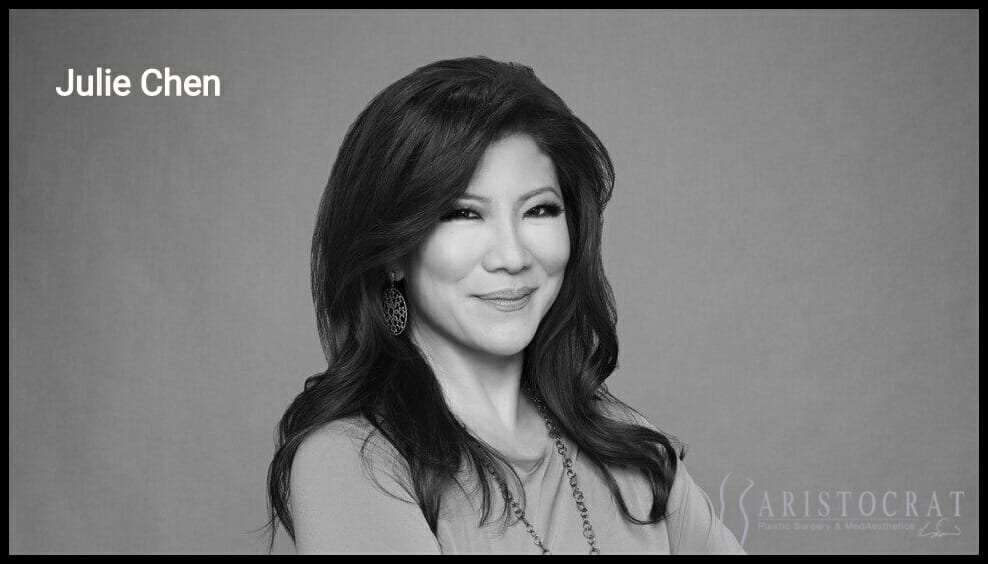
“Since I first revealed my surgery on The Talk, the reaction from the Asian community—specifically from Asian women—has been tremendous.” Julie Chen talks about her post-op experiences. “Many told me they finally felt free from feeling shamed. Others told me they wanted to get it done, but it felt like it was a dirty little secret people in the Asian community didn’t discuss, especially with non-Asians, and even with their own family.”
In addition to the overwhelming support from the community, celebrities joined in the celebration of Chen’s transformation.
“I know Barbra Streisand, and she was fascinated by this story. She was interested in finding out more details, beyond what I said on the show. Each time I was asked about the surgery, I was more than happy to inform and educate, because my reason for getting it had everything to do with my job.”
Most disappointingly, Julie Chen talks about the negative stereotypes surrounding cosmetic adjustments. For many Asians, going under the knife to look more Westernized is a big taboo.
“I had one sister and one aunt who thought it (going under the knife) was denying my heritage.” Chen highlights cultural complexities that rally against plastic surgery. “It was considered shameful. A disappointment. Then there were women in non-Asian communities who were flabbergasted that this was such a thing. It was very, no pun intended, eye-opening.”
Ultimately, Chen says, it wasn’t the surgeon’s knife that made the difference in her life, but a surge of self-confidence and self-esteem that followed after.
“But what I really learned from it is that confidence and a winning personality are always attractive, and now I’m happier and more comfortable with how I look—for a number of reasons.” Chen reveals. “One, I’m more mature, so I’m more comfortable in my own skin. The only thing I don’t like is the sunspots on my cheeks. I think, “I should have worn that sunscreen when I was younger!” I want smooth, even skin—the same pigmentation throughout. I’ve also noticed that as I’ve gotten older, my eyebrows have begun thinning, and I can’t say I’m a fan of that.”
2. Lip Augmentation
Lips are another distinctive feature that separates Asian faces from Western ones.
Many women of Asian descent are insecure about their lips being “too flat” or “too narrow.” Since lips add tremendously to the overall “depth” of the face, it is considered one of the go-to procedures for Chinese women who seek a more Western-looking appearance.
Historically, lip fillers—usually consisting of hyaluronic acids—have been used. While lip fillers do provide satisfactory results for patients, they don’t last for long—in most cases, patients will have to re-fill their lips within 6 months to keep up with their new appearance.
Here at Aristocrat, we offer a different—lasting—option, called PermaLip.
As opposed to hyaluronic lip fillers, which are basically fluids injected into your lips to make them look plumper, PermaLip uses silicone implants to create a fuller appearance that lasts.
Lip Fillers: Still a Good Option?
There are several important advantages to using lip fillers.
Number one is that you can precisely control your lip volume. You inject some, you look in the mirror. If you want some more, you inject some more. It’s that simple. While 3D modelling and before-after pictures will help you get the idea of how you might look with the implants, you won’t have the luxury of quickly readjusting if you don’t feel satisfied.
Another big advantage is that lip fillers are basically just some fluid—a fluid that is found naturally in your body—injected into your body. For that reason, it is almost impossible for lip fillers to go wrong: any bumps or lumps created by the procedure will dissolve naturally. With silicone implants, however, additional corrections might be needed.
Since there’s no incision to be made, there’s going to be significantly less bruising and swelling with lip fillers, compared to the more invasive PermaLip procedure. It means you’ll recover much quicker, and be able to enjoy your results sooner.
For the same reason, lip fillers are also extremely unlikely to cause any complications, allergies or infections.
PermaLip: Fuller Lips for Good
However, as we’ve mentioned before, there’s one big disadvantage with lip fillers: they don’t last. 6 months is about as long as you can expect your new lips to last, before you’ll need a re-injection.
In those cases, a PermaLip procedure is offered.
PermaLip lip implants are made from a soft, solid silicone that looks and feels natural. They are perfectly contoured and tapered to match the patient’s natural lip shape.
Previously used implant materials often caused tissue growth irregularities due to the surface and texture of the device. With a smooth implant surface, PermaLip offers a safer and much more predictable alternative.
How Does the PermaLip Procedure Go?
First of all, the patient will be administered local anaesthesia to avoid any discomfort.
Subsequently, small incisions will be made at the corner of the mouth on the upper and lower lips. The implants are then passed through these incisions until they fit across the entire length of the lips.
Once the implants are in place, the incisions are carefully sutured. The entire procedure typically takes no more than 30 minutes, and since local anesthesia is used, the recovery process is easy. There are different implant sizes available to match your cosmetic tastes and natural anatomy.
Summary: Lip Fillers vs. PermaLip
Here are a few key takeaways, comparing the two procedures:
- Lip fillers will require several procedures, while PermaLip is a one-time, 30-minute procedure
- Lip fillers will wear off within 6 months, whereas PermaLip offers permanent implants
- With lip fillers, it may be easier to manage exactly how full you want your lips to be (due to the gradual nature of the procedure)
3. Rhinoplasty (Nose Job)
When it comes to surgical procedures, there are few that can compare to rhinoplasty in their variability.
The requests we get are all unique: some want their noses wider, while others prefer a “pointier” appearance; some want the tip of their nose to be pointed upwards, while others prefer a downwards-pointing appearance.
Ultimately, they all want the same thing: to make their noses look in harmony with the rest of the face. As expected, the suggestions we make for Caucasian and Asian females can be very different due to their anatomical differences.
There are patterns, however, to be observed. For Westerners, Rhinoplasty usually means either taking the bump out of their nose, or making it look thinner and more straight.
As Chinese faces tend to be somewhat “flatter”, it’s usually the projection that they seek. They want their noses to look more pronounced in their silhouette.
How Does the Chinese Rhinoplasty Procedure Go?
In most cases, women with a Chinese complexion will suffice with some simple tissue manipulation. However, there are cases where that is not enough, and a silicone implant may be used to add some volume to the nose.
It is important to emphasize that rhinoplasty is an extremely individual procedure, and a potential patient shouldn’t be looking for generalized answer. Solutions will only start surfacing after a careful consultation with your Board-certified surgeon.
4. Chin Augmentation (Pointy, Pronounced Chin)
If there’s one facial feature that is distinguishably characteristic to Chinese faces, it’s a flat, “underdeveloped” chin.
Many women of Asian descent (especially in Central Asia) have a very small, flat chin.
In contrast, Western women often have a much pointier chin, both looking at a person’s profile and directly into the face.
For that reason, many Chinese women opt for chin augmentation procedures.
Similarly to lip augmentation, there are two general methods of achieving a pointier, more pronounced chin appearance.
Botox Fillers
Botulinum toxin can be used to change the way your chin looks. The substance is injected into the muscles beneath the chin and proceeds to relax the muscle tissue, creating a fuller appearance.
Historically, Botox injections have been used for much more than just a Westernized appearance. Many patients opt for Botox injections to treat wrinkling, creasing and other conditions affecting the chin.
One of the biggest advantages of Botox injections over chin implants is that it’s an extremely quick, safe and non-invasive procedure, which eliminates a myriad of potential complications that can pose a threat when a surgical route is chosen. Due to the gradual process of the procedure (the transformation happens step-by-step, over the course of several appointments), it is also easy to control your final outcome.
The major disadvantage of chin fillers is that they’re temporary. The relaxation (and augmentation) effects Botox has on the muscles lasts 3-6 months on average.
However, the reverse change doesn’t happen overnight: from the moment you step out of your aesthetician’s office, your chin will start slowly drifting towards its original shape. After that, the patient needs to re-do the procedure, which can be both costly and inconvenient.
That being said, over 7.2 million Americans have opted for the Botox filler option in 2017 alone. That is a good indication that many of them prefer a less invasive, yet temporary option.
Chin Implants
Genioplasty—the technical term for chin surgery—can be mostly categorized into two types of the procedure.
The first type—chin implantation—is much more common than the other one.
During chin implantation, an incision will be made internally—to avoid any visible, external scars—and a silicone implant will be placed in the chin area. The incision will be carefully soutured and you’ll be back to normal within a few weeks.
After the procedure, some swelling and bruising is expected. As with any plastic surgery procedure, your appearance gets worse before it gets better.
The second type of chin procedure—sliding genioplasty—is a much more rare and niche procedure. It is mostly offered to patients who have a receding jawline and a weak chin.
During sliding genioplasty, your facial bones are manipulated to create a more defined, pointier appearance.
Sliding genioplasty’s name derives from the surgeon physically sliding the patient’s chin bone forward (or backward) and repositioning it in a more symmetrical and desirable place on the face.
An incision is made into the patient’s chin bone allowing access to the bone and structure of the chin. From there, the chin is either pulled forward or pushed back, whichever is needed to restore balance to facial structure.
When the chin is slid forward, it can also add more projection to a patient’s lips, causing more overall facial symmetry. Whether the chin is pulled forward or pushed back, it is typically held in place with titanium screws so the bones are securely repositioned permanently.
While the procedure is profoundly different from chin implantation, the recovery is somewhat similar. It shouldn’t take more than 2-3 weeks for the bruising and swelling to be reduced to a point where you’re comfortable socializing and returning to work.
Final Verdict: It’s a Cruel World; Best We Can Do Is Adapt
We don’t make the rules. People’s attitudes to plastic surgery are rooted deeply in cultural and economic factors, and their motivation’s should not be judged.
When it comes to Chinese plastic surgery, the topic gets exponentially more complex. Multiple reports show that people with Asian features are offered fewer opportunities to advance in their careers to senior management positions in US companies.
It is unfair, but that’s the world we live in. To those who accept it, a surgeon’s knife can help. Bigger eyes, a pointier nose, and definition in the chin area are all seen as investments.
It is a bad thing—to go under the knife in order to improve your career possibilities? We’re not in a position to judge.
What we can do—and have been doing for years—is to guide you through this transformational journey and help you achieve your dreams.

